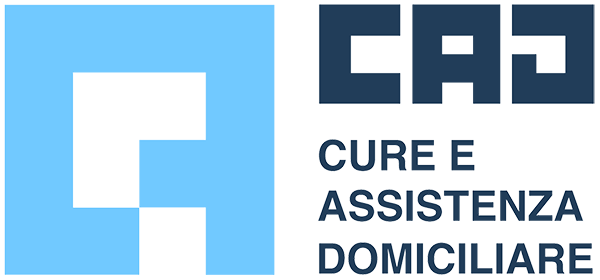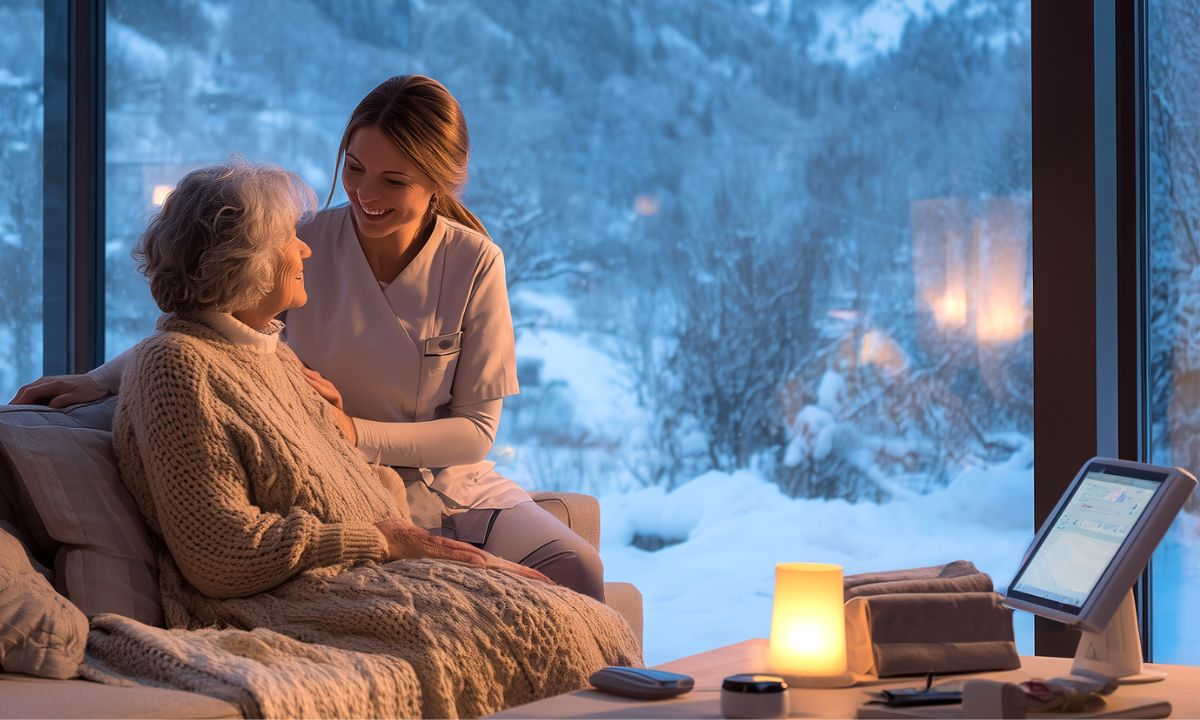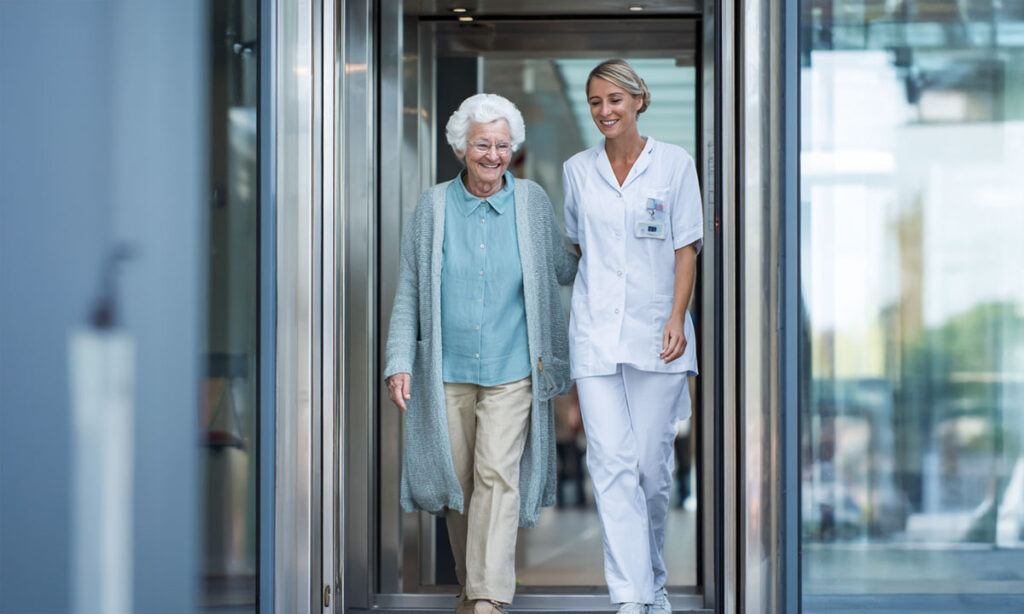Preparing for winter safely in your own home
Winter in Ticino is a season of contrasts. On the one hand, there is the charm of snow-capped mountains, breathtaking landscapes, and the cozy atmosphere of shorter days. On the other hand, there are the real challenges that the harsh climate brings, especially for the elderly and frail people living in their own homes. Temperatures dropping below zero, days becoming much shorter, and often unpredictable weather conditions turn the house from a safe haven into a place that needs extra caution.
For those involved in home care, preparing the home for the winter is not just a matter of comfort, but of absolute safety. The statistics speak for themselves: during the winter months, domestic accidents increase by 30%, hospitalizations for respiratory complications rise significantly, and cases of seasonal depression reach their annual peak. This is not alarmism, but a reality we face every day.
At CAD Healthcare, with many years of experience in home care in the Ticino region, we have learned that prevention is always the most effective strategy. Every winter brings the same challenges, but also the same opportunities to prepare adequately. Here is a comprehensive guide, based on our direct experience and data collected over years of care, to face the cold season in complete safety.
1. Preventing accidents in the home: lighting, stability, and safety
When the home becomes a dangerous environment
With winter’s arrival, the hours of natural sunlight diminish significantly. In Ticino, during December, the sun sets at 4:30 p.m., leaving most of the day in darkness. For an older adult, this means spending many more hours in artificially lit environments, often with inadequate lighting. Poor lighting is not just inconvenient — it’s a genuine risk factor.
Falls in the home are the leading cause of hospital admissions for people over 65 during the winter. An unseen step, a slippery rug, a slipper that doesn’t grip the floor well: small details that can turn into serious accidents. The problem is exacerbated when we consider that many older people, in an effort to save on heating costs, tend to light only the rooms they use, leaving corridors and bathrooms in dim light.
Find out more at preventing readmission after hospital discharge
The CAD solution: a systematic approach to home safety
During our home visits, our operators always conduct a comprehensive environmental assessment. They do not just provide healthcare, but observe the environment with a critical eye, identifying potential risks and proposing concrete solutions.
Strategic lighting
We install LED night lights along the most frequently used routes, especially between the bedroom and bathroom. These lights, equipped with motion sensors, activate automatically when they detect presence, ensuring adequate visibility without glare. The energy cost is minimal, but the safety benefit is enormous.
Footwear assessment
Inadequate slippers cause many accidents. We always recommend closed-toe shoes with non-slip soles and ankle support. During the winter, we also provide non-slip socks for those who prefer to walk barefoot at home.
Carpet management
Carpets can be beautiful and cozy, but they pose a significant risk. We remove loose carpets and replace them with versions equipped with non-slip backing. Where possible, we prefer alternative solutions such as fixed carpeting or heated floors.
Support technology
Our mobility monitoring devices, such as environmental sensors, detect abnormal movement patterns. Suppose a person starts to move more slowly or with greater uncertainty. In that case, the system generates an alert that allows us to take preventive action, perhaps by increasing the frequency of visits or modifying the home environment.
Case study: greater safety at home and fewer falls
Mrs. Maria, 78, lives alone in a two-story house in Lugano. Last winter, after a nighttime fall on her way to the bathroom, her children contacted CAD Healthcare. Our assessment revealed several risk factors: a dark hallway, worn slippers, and a slippery rug. We installed an automatic lighting system, provided suitable footwear, and removed the dangerous rugs. We also installed motion sensors to monitor her nighttime movements—the result: no accidents in the last 12 months and a significant reduction in nighttime anxiety.
2. Defending against seasonal illnesses: active prevention and a healthy environment
Winter as a season of infections
Winter brings with it a significant increase in respiratory illnesses. Influenza, colds, bronchitis, and pneumonia thrive in overheated and poorly ventilated homes. For an elderly or immunocompromised person, what is a simple cold for a young adult can turn into a serious complication requiring hospitalization.
The problem is exacerbated by winter habits, such as windows always being closed to prevent heat loss, heating turned up to maximum, and poor air circulation. These factors create an ideal environment for the proliferation of viruses and bacteria, exponentially increasing the risk of infection.
The CAD strategy: prevention on multiple fronts
Our strategy for preventing seasonal illnesses is based on three fundamental pillars: vaccination, environmental hygiene, and early monitoring.
Personalized vaccination campaign
Every year, starting in September, our nurses conduct an awareness campaign on flu vaccination. We don’t just recommend the vaccine; we also organize home vaccination sessions for those who have difficulty accessing a doctor. We work closely with attending physicians to ensure that each of our patients receives the most appropriate protection for their clinical condition.
Strict hygiene protocols
Our staff follow stringent hand hygiene protocols, using hydroalcoholic solutions before and after each contact. During the flu season, they wear personal protective equipment when necessary and undergo regular health checks to avoid becoming carriers of infection.
Ventilation education
We teach our patients and their families the importance of air exchange, even during the winter months. We recommend opening windows for 10-15 minutes every 2-3 hours, creating air currents that completely renew the environment without dispersing too much heat. For those who have difficulty remembering these appointments, we provide automatic reminders through our smart devices.
Monitoring vital signs
Our remote monitoring systems detect early signs of an ongoing infection. A slight increase in body temperature or a change in heart or respiratory rate can be the first signs of a disease. Identifying them early means being able to intervene promptly, often avoiding complications and hospitalizations.
The importance of winter nutrition
During winter, nutrition plays a crucial role in maintaining the immune system. Our operators pay particular attention to the diet of our patients, ensuring that they consume adequate amounts of vitamins C and D, which are often deficient during the dark months. We prepare personalized meal plans that include nutritious soups, immune-boosting herbal teas, and seasonal fruits rich in antioxidants. For those who have difficulty preparing meals, we offer a meal planning service and, when necessary, direct meal preparation.
3. Combating loneliness and seasonal depression: human warmth as medicine
Winter of the soul
Seasonal Affective Disorder (SAD) is not just a psychological fad, but a documented clinical reality that affects up to 10% of the elderly population during the winter months. The reduction in daylight hours, social isolation forced by weather conditions, and the tendency to stay indoors create a perfect cocktail for the development of depressive states.
For an older adult living alone, winter can become a period of profound loneliness. Visits from family members are reduced due to bad weather, outings become rare and dangerous, and social activities are interrupted. The result is progressive isolation, which can have devastating consequences on mental health and, consequently, physical health.
Find out how to improve quality of life at home when dealing with cognitive decline
The CAD approach: technology and humanity at the service of psychological well-being
Our strategy for combating seasonal depression is based on the integration of qualified human support and innovative technologies that foster social connections
Home care workers as “life coaches”
Our operators are trained not only to provide healthcare, but also to recognize the signs of seasonal depression. During each visit, they devote time to active listening, encouraging the person to express their feelings and concerns. They are not simply task performers, but true “life coaches” who help maintain a structured and meaningful daily routine.
Personalized routines
We create personalized daily routines that incorporate moments of light physical activity (even just seated exercises), stimulating cognitive activities (such as reading, puzzles, and memory games), and opportunities for socialization. Each routine is tailored to individual abilities and preferences, but always geared toward keeping the mind and body active.
4. Ensuring adequate hydration: water as a life-saving medicine
The “silent” thirst of winter
During winter, the sensation of thirst is significantly reduced. The body, focused on maintaining body temperature, sends less clear signals about the need for hydration. This phenomenon, combined with the tendency to drink less cold liquids during the cold season, leads to chronic dehydration that is often underestimated.
In older adults, dehydration can have dramatic consequences: mental confusion, muscle weakness, increased risk of falls, urinary tract infections, kidney and cardiovascular problems. Even mild dehydration can be mistaken for a deterioration in cognitive function, leading to misdiagnosis and inappropriate treatment.
The CAD strategy: active monitoring and nutritional education
Our approach to winter hydration is based on continuous monitoring, personalized education, and targeted interventions.
Monitoring fluid intake
Our staff draws up a fluid intake chart when necessary. They do not just record the quantity, but also the type (water, herbal teas, soups, etc.) and times of day. This allows us to identify problematic patterns and intervene promptly.
Personalized nutritional education
Each person has different hydration needs. A diabetic will have different needs than someone suffering from heart failure. Our nurses, in collaboration with specialized nutritionists, create personalized hydration plans that take into account existing conditions, medications, and individual preferences.
Creative strategies to increase intake
We know that saying “drink more” is not enough. We implement creative and personalized strategies:
- Aromatic herbal teas made with fresh herbs
- Nutritious and flavorful soups that hydrate and nourish
- Water-rich fruits such as oranges, tangerines, and kiwis
- Gentle reminders through our smart devices
- Graduated water bottles that make the daily goal visible
Support technology
Our environmental sensors can indirectly detect signs of dehydration by monitoring bathroom visit frequency, sleep patterns, and activity levels. A significant reduction in these parameters may indicate ongoing dehydration.
5. Home heating safety: preventing invisible risks
The hidden dangers of a heated environment
In winter, home heating is not just a matter of comfort, but a vital necessity. However, outdated systems, poor maintenance, or incorrect use can turn an ally for survival into a potential threat. The risks are numerous and often underestimated, including carbon monoxide poisoning, fires, explosions, and burns.
For an older adult, remembering all maintenance deadlines, recognizing signs of malfunction, and managing the system correctly can be a complex task. The tendency to “save” on maintenance or use alternative, potentially dangerous heating systems further exacerbates the situation.
Are you dissatisfied with the home care service you have received?
Request a consultation to request the care you need.
Technology and humanity at the service of safety
What sets CAD Healthcare apart from other home care services is our ability to integrate advanced technologies with a profoundly human approach. We don’t just assist when requested; we work proactively to prevent problems before they arise.
Our monitoring devices are not just technological gadgets, but tools that allow us to be present even when we are not physically there. Our operations center, which operates 24 hours a day, 7 days a week, is the beating heart of a system that constantly monitors our patients.
But technology, however advanced, is only a tool. Our professionals represent the real added value: nurses, social and healthcare workers, and home care assistants who are trained not only to provide care, but also to be true “guardian angels” to the people we assist.
Preparing together for a peaceful winter
Winter in Ticino can be a fantastic season, even for those who need home care. The key is preparation: anticipating problems, implementing preventive strategies, and having an action plan for every eventuality.
At CAD Healthcare, we believe that every person has the right to live with dignity and safety in their own home, regardless of age or health condition. Our commitment is to make this right a daily reality through care that combines professional expertise, innovative technologies, and, above all, a human approach that always puts the person at the center.
If you’re considering how to cope with the upcoming winter, have concerns about a loved one, or would like to learn more about our services, please don’t hesitate to contact us. We will be happy to work with you to find the solutions that best suit your specific needs.
Although winter may be cold outside, with the proper preparation and support, it can be the warmest and most welcoming season of the year inside your home.
Request a consultation: contact us




